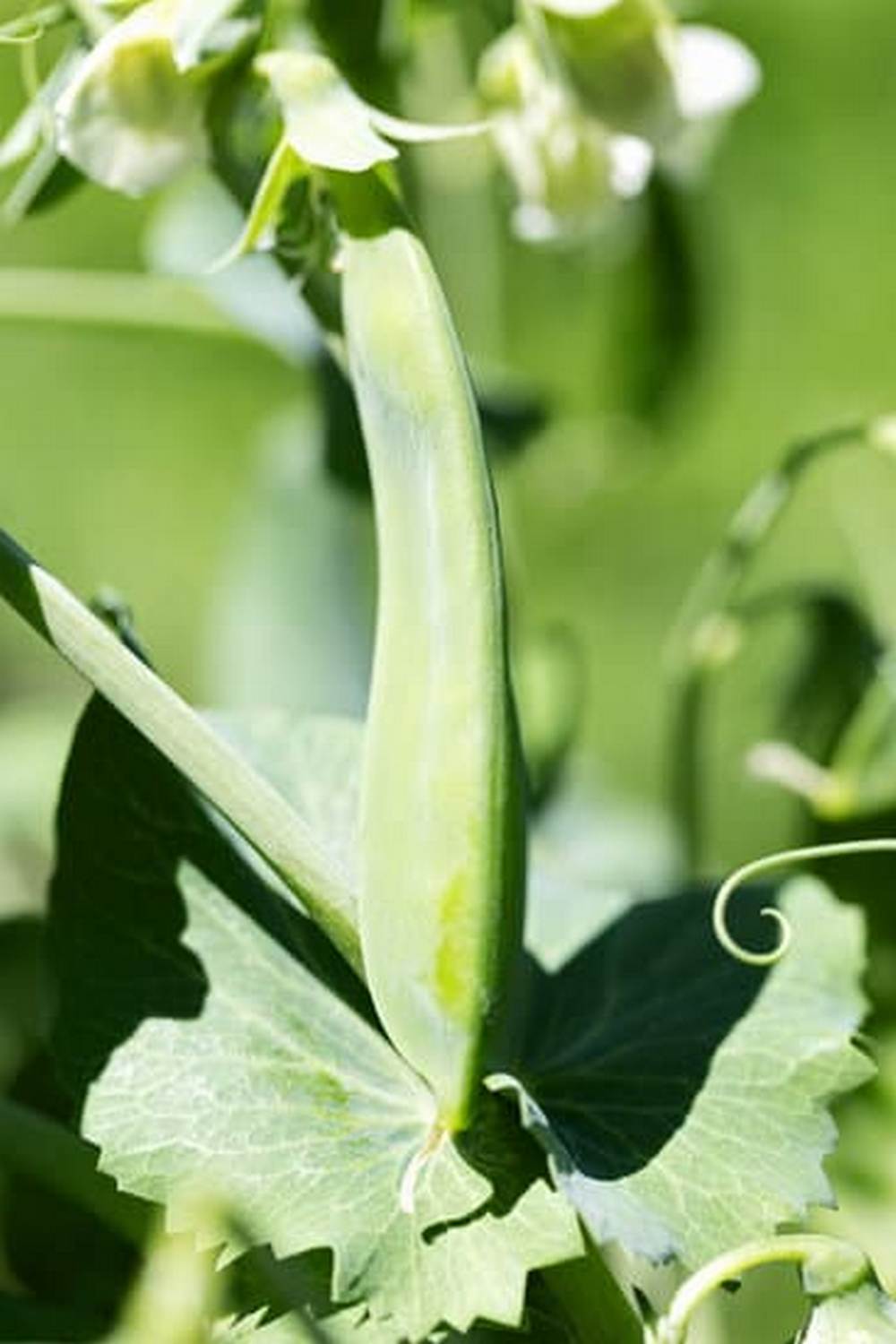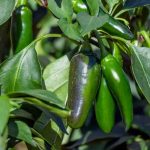Are you interested in venturing into zone 10 fruit and vegetable gardening? Zone 10 offers a unique climate and conditions that can be both challenging and rewarding for gardeners.
With the right knowledge and techniques, you can create a thriving garden filled with delicious fruits and vegetables. In this article, we will explore the characteristics of zone 10 gardening, the best fruit varieties to grow, ideal vegetable choices, gardening tips, seasonal planting calendar, pest and disease management strategies, garden design tips, and success stories from local gardeners.
Zone 10 gardening is characterized by its warm temperatures and mild winters. This makes it an ideal environment for growing a wide variety of fruits and vegetables. Understanding the specific conditions of zone 10 will help you make informed decisions about what to plant and how to care for your garden. Whether you are an experienced gardener or a beginner, learning about zone 10 gardening is essential for success.
In this comprehensive guide, we will delve into the best fruit varieties for zone 10, providing insights into top fruit trees and plants that thrive in the region. Additionally, we will offer a detailed look at the ideal vegetable choices for zone 10, allowing you to make informed decisions about what to grow in your garden.
Furthermore, expert advice on soil preparation, watering, maintenance tips, seasonal planting calendar, pest control strategies,garden design tips,and inspiring success stories from local gardeners will be unveiled throughout this article.
Best Fruit Varieties for Zone 10
When it comes to Zone 10 fruit and vegetable gardening, choosing the right fruit varieties is crucial for a successful harvest. The unique climate and conditions of Zone 10 present both opportunities and challenges for gardeners, making it essential to select fruit trees and plants that can thrive in this region.
In Zone 10, where temperatures rarely dip below 30°F (-1°C), a wide variety of fruits can be successfully grown, providing an abundance of delicious and nutritious produce for gardeners to enjoy.
Popular Fruit Trees for Zone 10
One of the most popular fruit trees for Zone 10 gardening is the avocado tree. With its high heat tolerance and ability to withstand drought conditions, the avocado tree is well-suited for the warm climate of Zone 10. Other popular fruit trees that thrive in this region include citrus trees such as oranges, lemons, limes, and grapefruits. These citrus trees not only provide an abundant harvest but also add a delightful fragrance to the garden.
Tropical Fruits for Zone 10
In addition to traditional fruit trees, gardeners in Zone 10 have the opportunity to grow exotic tropical fruits such as mangoes, papayas, and bananas. These fruits not only add a touch of tropical flair to the garden but also thrive in the warm and humid conditions of Zone 10. By selecting these tropical fruit varieties, gardeners can create a diverse and vibrant orchard that produces an array of flavors and textures.
Berries and Grapes
For those looking to diversify their fruit garden, berries such as blackberries, raspberries, and strawberries are excellent choices for Zone 10. These small fruits are easy to grow and can be enjoyed fresh or used in jams, jellies, or baked goods. Additionally, grapes are well-suited for the warm climate of Zone 10 and can be trained along trellises or arbors to create a beautiful and productive vineyard in the garden.
By carefully selecting the best fruit varieties for Zone 10 gardening, gardeners can enjoy a bountiful harvest of delicious fruits year after year. Whether planting traditional citrus trees or exotic tropical fruits, there are plenty of options available for creating a thriving fruit garden in this unique climate zone.
Ideal Vegetable Choices for Zone 10
Zone 10 offers a unique climate for gardening, with its warm temperatures and mild winters. This makes it an ideal region for growing a variety of delicious and nutritious vegetables. Whether you’re an experienced gardener or just starting out, there are plenty of vegetable options to choose from in Zone 10. Here are some ideal vegetable choices for this specific zone.
Warm-Season Vegetables
In Zone 10, the warm climate allows for the successful growth of a wide range of warm-season vegetables. These include tomatoes, peppers, eggplant, and cucumbers. These vegetables thrive in the heat and can produce bountiful harvests throughout the summer months.
Cold-Season Vegetables
While the temperatures in Zone 10 remain relatively warm throughout the year, there are still opportunities to grow cold-season vegetables during the milder winter months. Vegetables such as lettuce, spinach, kale, and broccoli can be successfully grown during this time. With proper care and attention to temperature fluctuations, these cold-season vegetables can flourish in Zone 10.
Root Vegetables
Root vegetables like carrots, beets, radishes, and turnips also make excellent choices for Zone 10 gardening. These hardy vegetables can withstand the warm climate and can be grown during various times of the year. With well-draining soil and regular watering, root vegetables can thrive in this zone.
Zone 10 Gardening Tips
When it comes to zone 10 fruit and vegetable gardening, understanding the unique climate and conditions of this region is crucial for success. Zone 10 typically experiences warm temperatures year-round, with mild winters and hot summers. The combination of tropical and subtropical climates creates a diverse environment that allows for a wide range of fruit and vegetable varieties to thrive.
In zone 10, it’s essential to focus on soil preparation, watering, and maintenance to ensure a successful garden. The sandy, well-draining soil common in this region requires regular amending with organic matter to improve its fertility and water retention capabilities. Adding compost, peat moss, or well-rotted manure can help enhance the soil structure and nutrient content.
When it comes to watering in zone 10 gardening, it’s important to be mindful of the hot and often dry conditions. Providing consistent moisture is key, especially during the dry season. Installing drip irrigation systems or soaker hoses can help deliver water directly to the root zone while minimizing evaporation. Mulching around plants with organic materials like straw or bark can also aid in retaining soil moisture.
In terms of maintenance, regular pruning and weeding are essential tasks for zone 10 gardens. Pruning fruit trees helps promote healthy growth and abundant fruit production while controlling pests and diseases.
Additionally, staying on top of weed management is crucial in preventing competition for water and nutrients among your plants. By following these expert tips on soil preparation, watering, and maintenance in zone 10 gardening, you’ll be well-equipped to create a thriving fruit and vegetable garden in this unique climate.
Seasonal Planting Calendar
Planting and harvesting in Zone 10 can be a year-round activity thanks to the warm climate and mild winters. It is important to take advantage of the unique conditions in this zone by carefully planning your garden’s planting calendar. With proper timing, you can ensure a bountiful harvest throughout the year.
In Zone 10, some of the best fruits to plant include citrus trees such as lemons, limes, and oranges. These trees thrive in the warm climate and provide an abundance of delicious fruits. Additionally, tropical fruits like mangoes, avocados, and papayas also do well in Zone 10. When it comes to vegetables, popular choices for this region include tomatoes, peppers, eggplant, and beans.
To make the most of your garden in Zone 10, it’s crucial to follow a planting calendar that takes into account the specific conditions of this region. For example, in January and February, cool-season crops like lettuce, carrots, and broccoli can be planted.
As spring arrives in March and April, it’s time to start sowing warm-season crops such as tomatoes, peppers, and squash. Then, as summer approaches in May and June, watermelon, cantaloupe, and sweet potatoes can be planted to enjoy a fruitful harvest during the warmer months.
By following a carefully planned seasonal planting calendar for Zone 10 gardening, you can maximize your garden’s productivity throughout the year while ensuring that your plants receive the right conditions for growth.
| Month | Recommended Crops |
|---|---|
| January – February | Lettuce, Carrots |
| March – April | Tomatoes; Peppers; Squash |
| May – June | Watermelon; Cantaloupe; Sweet Potatoes |
Managing Pests and Diseases in Zone 10
When it comes to Zone 10 fruit and vegetable gardening, one of the key challenges that gardeners face is managing pests and diseases. With the warm and humid climate in Zone 10, certain pests and diseases can thrive, posing a threat to your garden. However, there are effective strategies that you can implement to keep your garden healthy and thriving.
To protect your fruits and vegetables from common pests and diseases in Zone 10, consider the following strategies:
1. Integrated Pest Management (IPM): Implementing an IPM program is essential for controlling pests in your garden. This approach combines biological, cultural, physical, and chemical tactics to effectively manage pest populations while minimizing risks to human health and the environment.
2. Proper Plant Placement: Consider the placement of your plants within your garden. By planting companion plants that deter pests or attract beneficial insects, you can naturally reduce pest populations in your garden.
3. Regular Monitoring: Keep a close eye on your plants for any signs of pest infestations or disease outbreaks. Early detection allows for prompt intervention and prevents the spread of pests and diseases throughout the garden.
In addition to these strategies, it’s important to stay informed about specific pests and diseases that are prevalent in Zone 10. Stay up-to-date with information from local agricultural extension services or gardening organizations to identify potential threats to your garden and take proactive measures to address them. By implementing these effective strategies, you can ensure that your Zone 10 fruit and vegetable garden remains healthy and productive throughout the growing season.
Zone 10 Garden Design
When it comes to creating a beautiful and functional garden layout in Zone 10, there are several key factors to consider. The unique climate and conditions of Zone 10 provide both opportunities and challenges for garden design.
With an average annual minimum temperature of 30 to 40 degrees Fahrenheit, Zone 10 offers a long growing season and the ability to cultivate a wide variety of plants. However, the region also presents obstacles such as high humidity, intense sunlight, and occasional tropical storms.
In order to make the most of your Zone 10 garden design, it’s important to carefully select plant species that are well-suited to the local climate. Opt for drought-tolerant plants that can withstand the hot and dry conditions of Zone 10, such as agave, succulents, and Mediterranean herbs. Additionally, consider incorporating native plants into your garden design, as they are naturally adapted to the specific environmental conditions of the region.
Another crucial aspect of Zone 10 garden design is efficient water management. Given the high temperatures and potential for drought in the region, it’s essential to include irrigation systems and water-conserving techniques in your garden layout. This may include drip irrigation, mulching, and strategic plant placement to minimize water usage while still maintaining a visually appealing landscape.
Lastly, when designing your garden layout in Zone 10, take into account the aesthetic appeal as well as functionality. Consider incorporating pathways for easy access and maintenance, outdoor seating areas for relaxation and entertainment, and focal points such as ornamental trees or decorative planters. By balancing beauty with practicality in your garden design, you can create a space that not only looks stunning but also serves its intended purpose effectively.
| Factors | Considerations |
|---|---|
| Plant Selection | Choose drought-tolerant and native plants |
| Water Management | Incorporate irrigation systems and water-conserving techniques |
| Aesthetics vs Functionality | Balance beauty with practicality in garden design |
Success Stories From Zone 10 Gardeners
As we have explored in this comprehensive guide to Zone 10 fruit and vegetable gardening, the unique climate and conditions of this region present both challenges and opportunities for gardeners. From understanding the specific needs of plants to managing pests and diseases, Zone 10 gardening requires careful planning and attention to detail. However, with the right knowledge and resources, it is possible to create a thriving garden that yields a bountiful harvest year after year.
One of the most inspiring aspects of Zone 10 gardening is hearing the success stories from local gardeners who have found their own paths to success. Whether it’s growing an abundant citrus orchard or cultivating a diverse selection of vegetables, these stories serve as a reminder that with dedication and perseverance, it is possible to achieve great results in this unique climate.
By sharing their experiences and insights, these gardeners provide valuable inspiration and guidance for others who are embarking on their own Zone 10 gardening journey.
In conclusion, while Zone 10 fruit and vegetable gardening requires careful consideration and specialized knowledge, it also offers abundant rewards for those who are willing to put in the effort. From selecting the best fruit varieties to implementing effective pest management strategies, there are numerous opportunities for success in this region. By learning from the experiences of fellow gardeners and applying expert tips, anyone can create a beautiful and productive garden in Zone 10.
Frequently Asked Questions
What Grows Best in Zone 10b?
Zone 10b is a tropical climate with warm temperatures year-round, so plants that thrive in this zone include exotic fruits like mangoes, papayas, and pineapples. Tropical flowers like hibiscus and plumeria also do well in this environment.
What Herbs Grow Well in Zone 10a?
In Zone 10a, where the climate is similar to 10b but with slightly cooler temperatures, herbs such as basil, mint, rosemary, and lemongrass grow well. These herbs enjoy the warm weather and ample sunshine of this zone.
Can You Grow Fruits and Vegetables Year Round?
In a zone with consistently warm weather like 10a or 10b, it is possible to grow fruits and vegetables year-round. With proper planning and crop rotation, you can continuously harvest a variety of produce such as tomatoes, peppers, cucumbers, strawberries, and citrus fruits throughout the year.
However, it’s important to consider each plant’s specific growing season and needs for successful year-round gardening in these zones.

If you’re looking to get into vegetable gardening, or are just looking for some tips on how to make your current garden better, then you’ve come to the right place! My name is Ethel and I have been gardening for years. In this blog, I’m going to share with you some of my best tips on how to create a successful vegetable garden.





